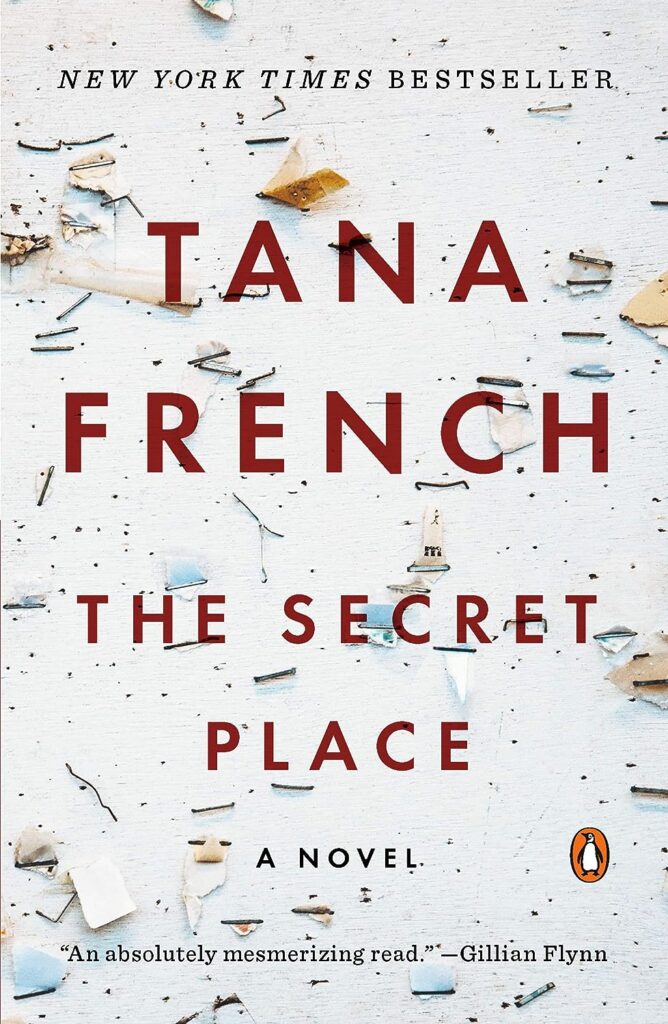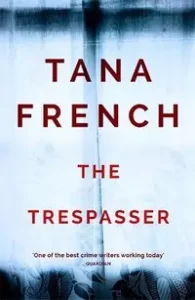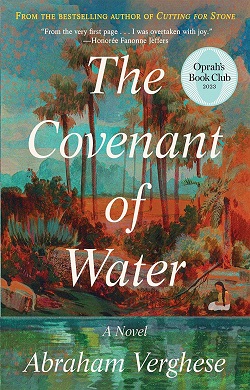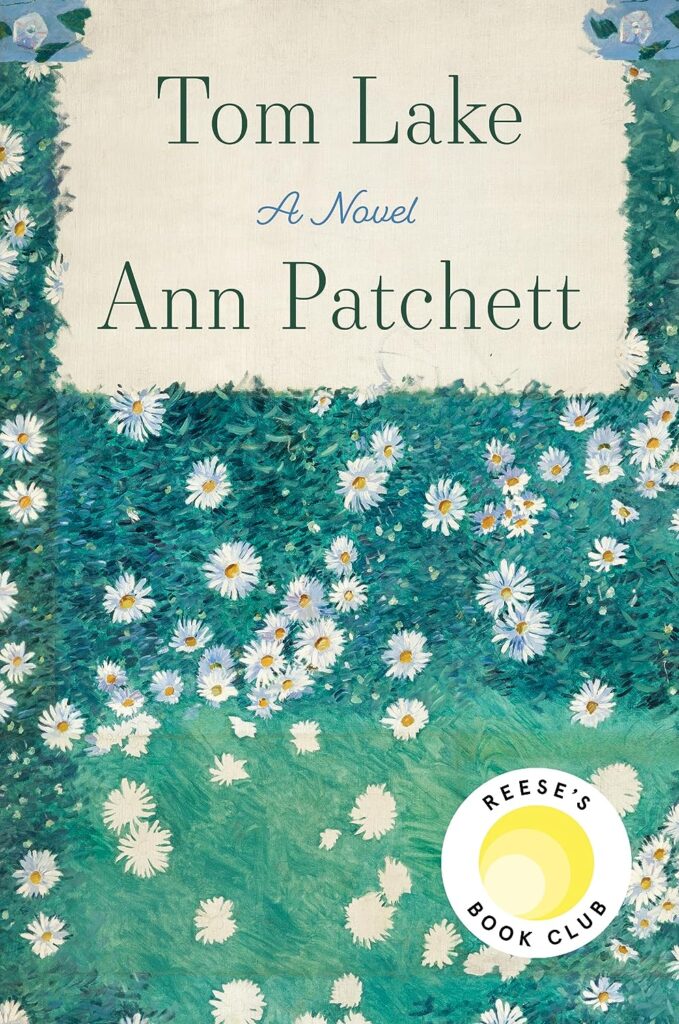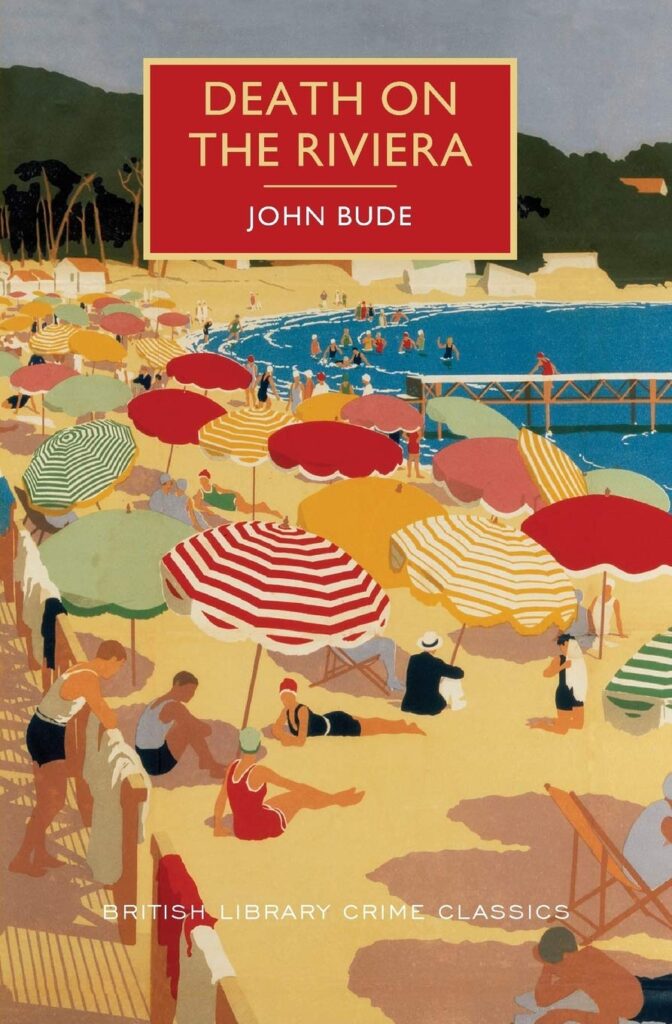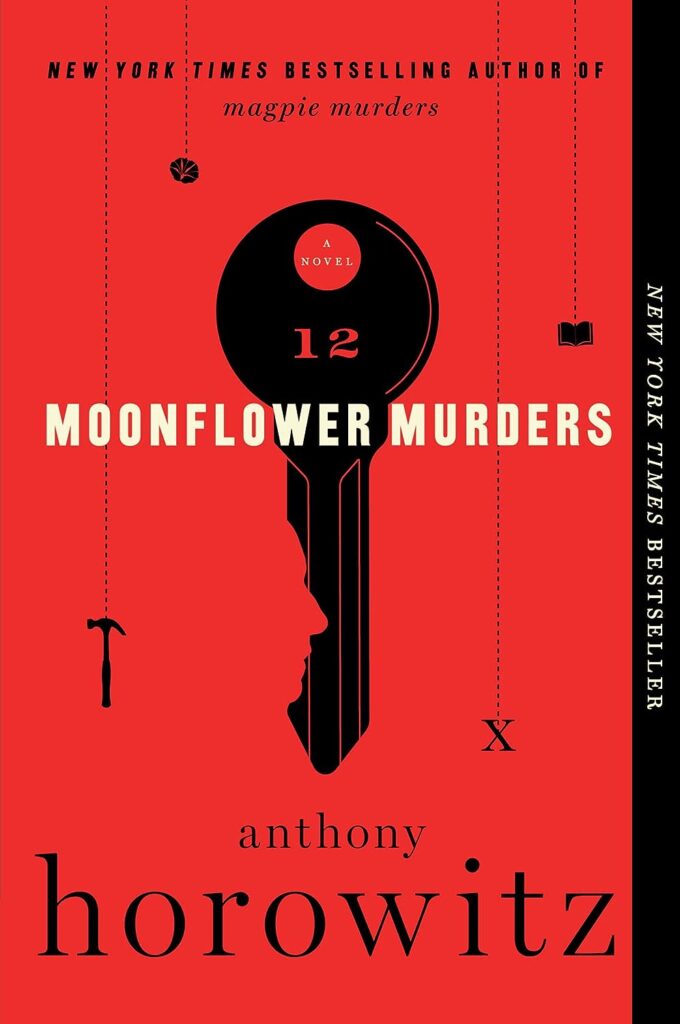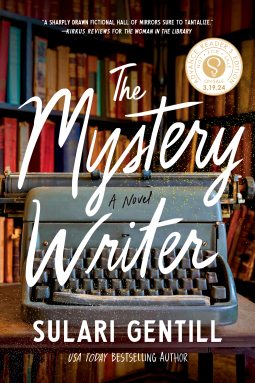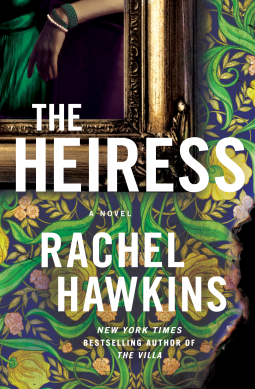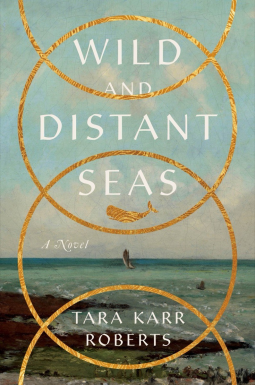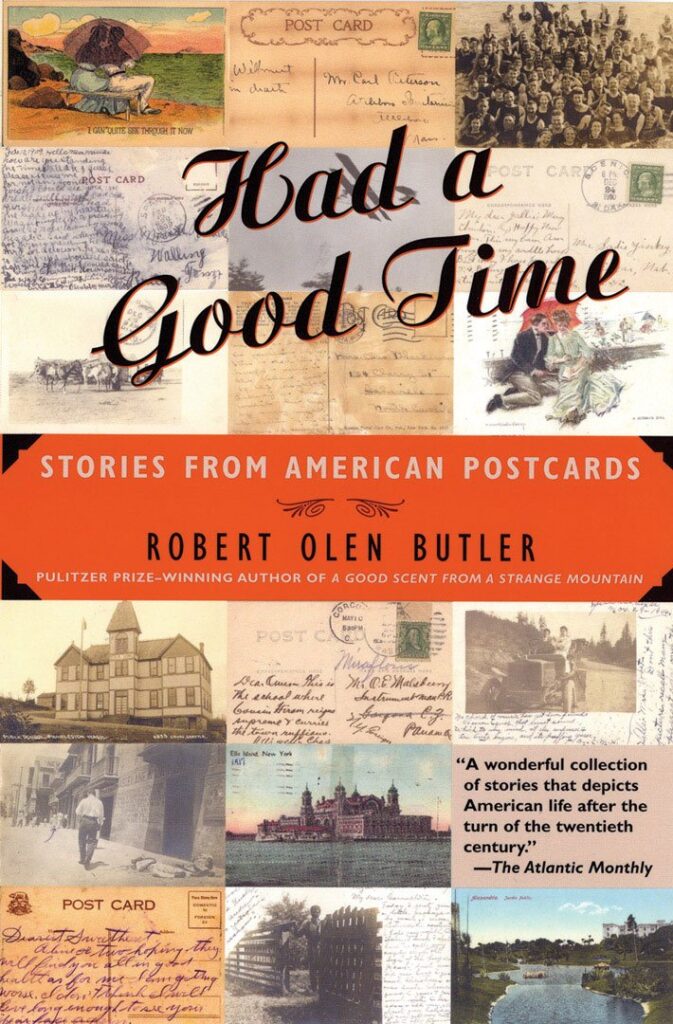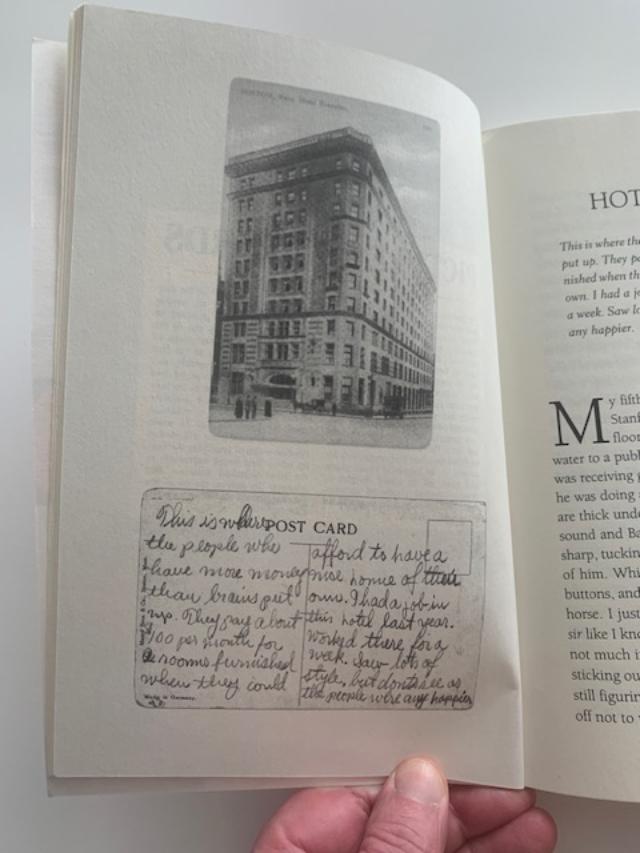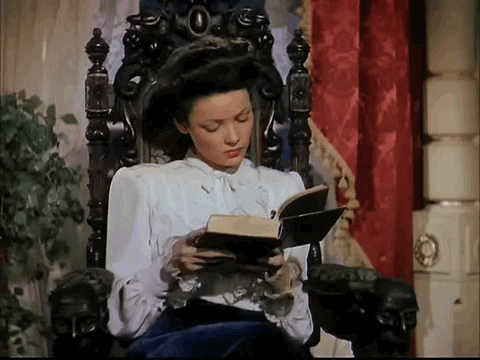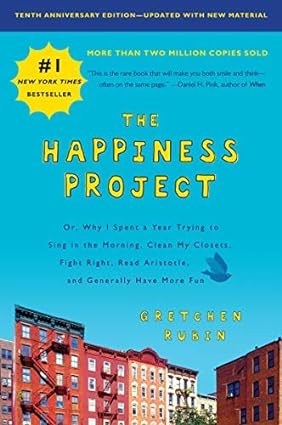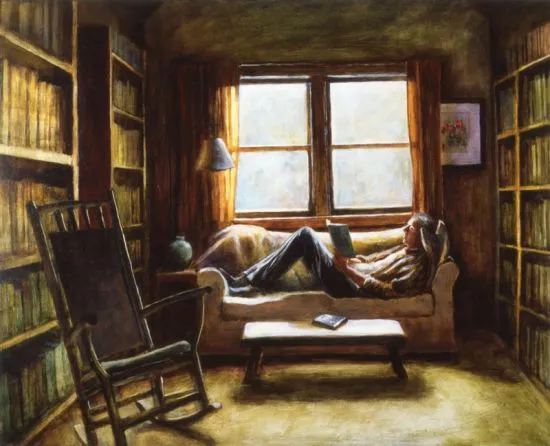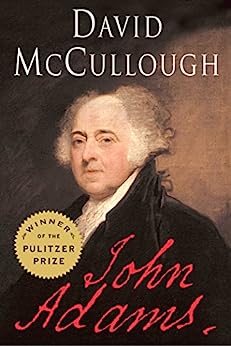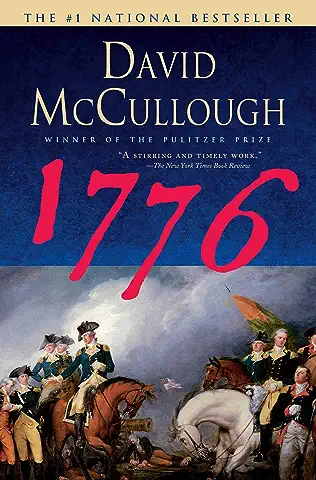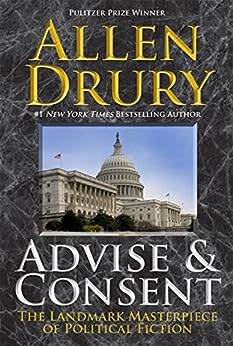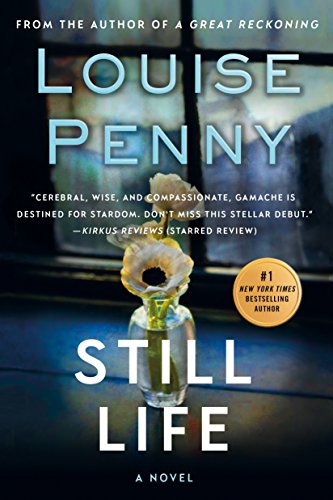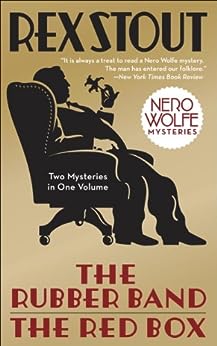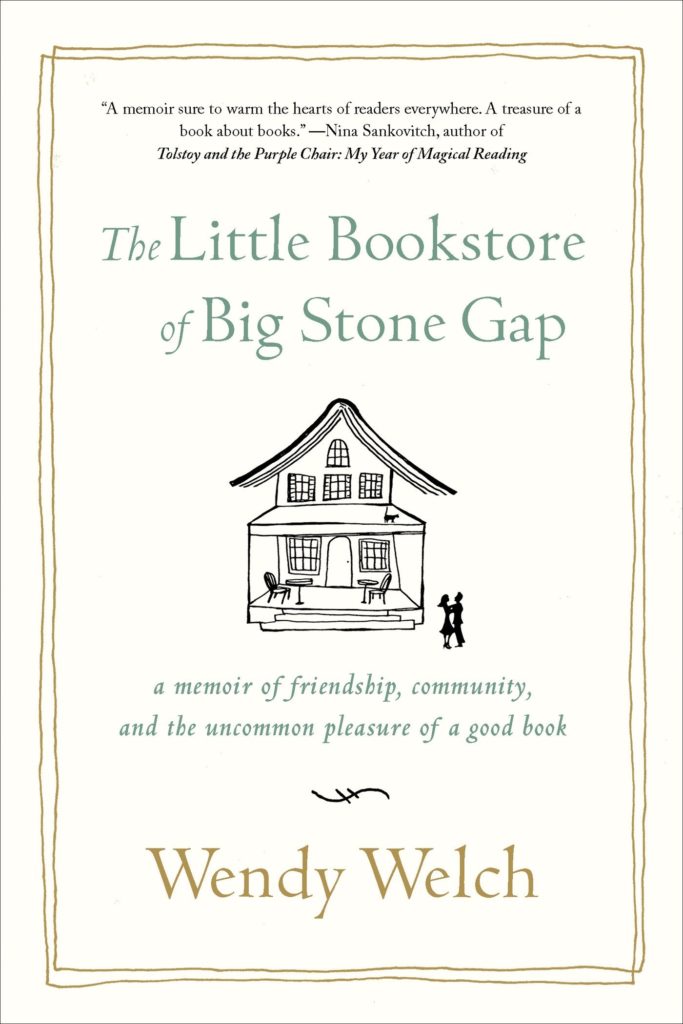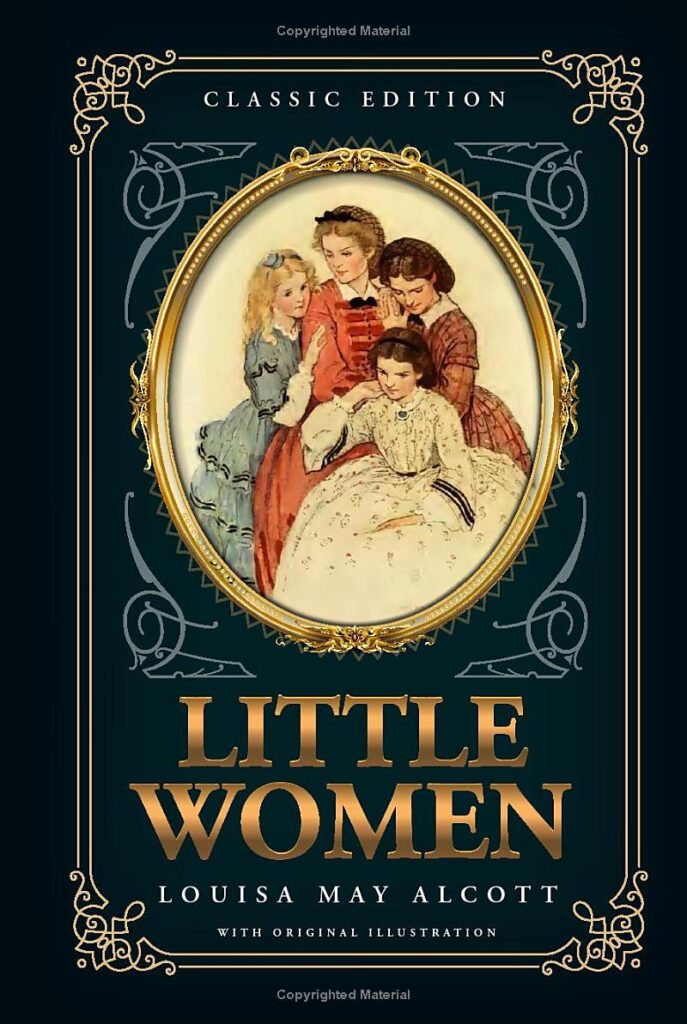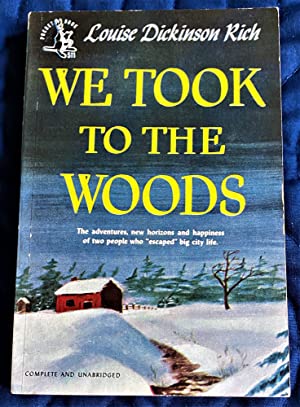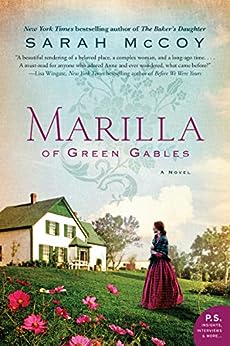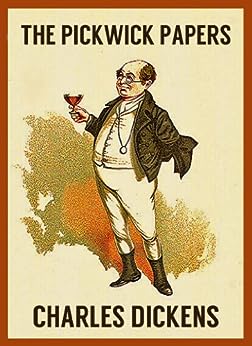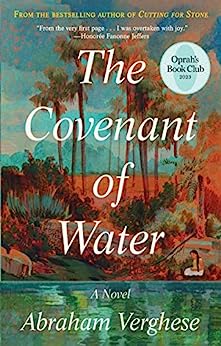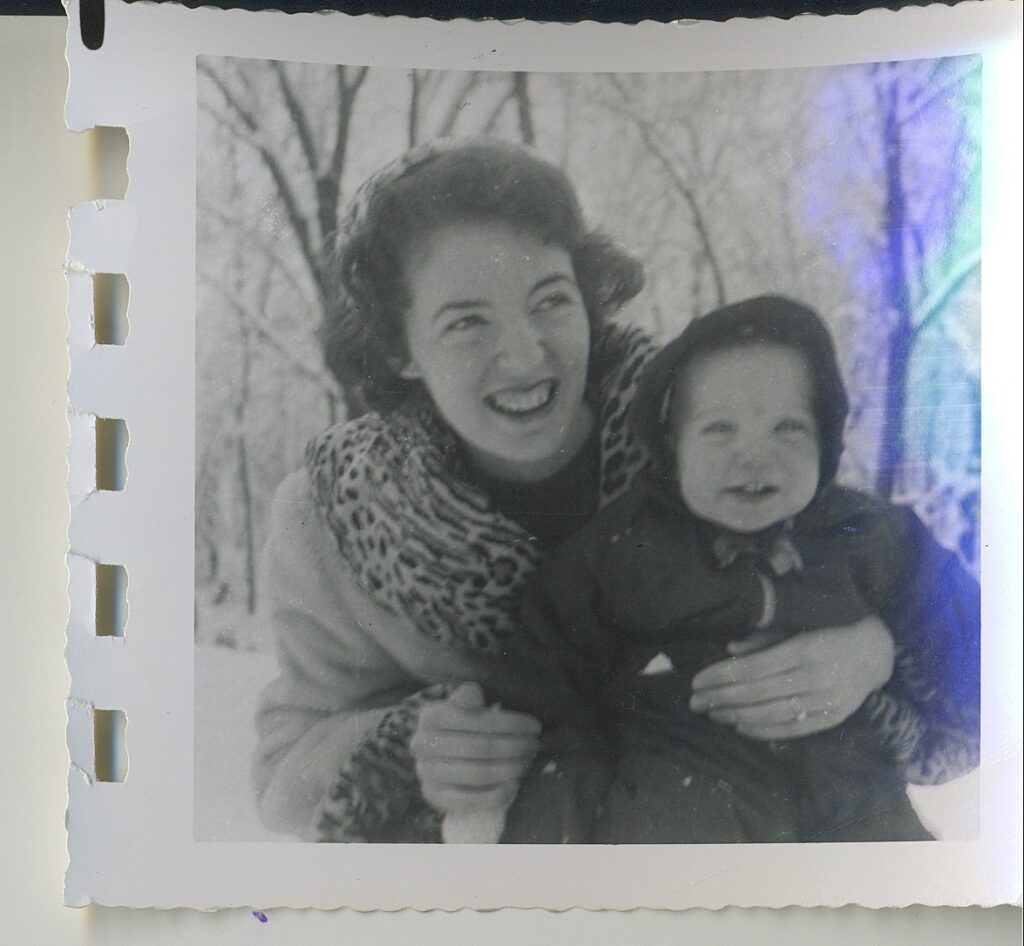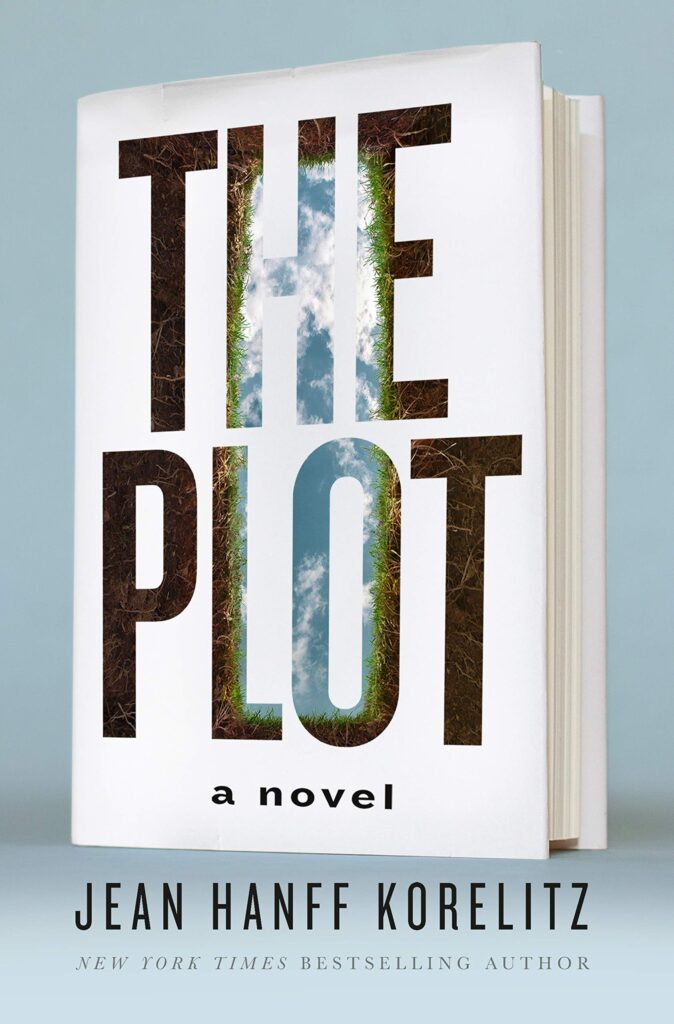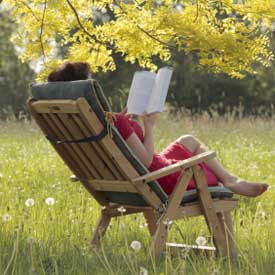The Secret Place by Tana French
Without intention, I ended up taking a month-long break from this little blog — my favorite place. Turns out it was necessary to clear my head, sweep the decks clean, and get back into reading — my happy place.
I’ve read two (no three) very different, but engrossing, books, and now that I’m back, let me tell you about the first of them.
See how I’m stringing you along for my other reads? All part of my plan, dear readers.
This is the fifth installment of the Ms. French’s Dublin Murder Squad series. I got hooked on this series years ago and I should have hunkered down and read them closer together, but other books distracted me (I’m looking at you Ms. Louise Penny).
Each of these books tells of a murder from the view of a different member (or adjacent member) of the Dublin Police Murder team. While, you can read them in any order, I suggest you try them in order.
THIS is the first in this wonderful series.
But don’t take my word for it,
The New Yorker critic Laura Miller says:
The Dublin Murder Squad series [is] the object of an intense, even cultic fascination. French’s readers like to go online and rank the books (six so far, counting “The Trespasser”) in order of preference, and while there’s no consensus, it’s taken for granted that anybody who’s read one will very shortly have read them all…Most crime fiction is diverting; French’s is consuming.
It only took me a few chapters to get drawn in again to another one of Ms. French’s mysteries and to remember the connections to the previous books. (I know, I know — I can’t remember the name of a person I just met, or the password for my Netflix account, but I’m Rain Man when it comes to plots, characters, and books I’ve read.)
We once again meet Holly Mackey, daughter of Frank Mackey both from the previous books The Likeness and Faithful Place when Detective Stephen Moran briefly worked her father. Anyway, Holly has come to Moran’s office with a photo of Chris Harper who was found murdered at Holly’s boarding school, a year ago – on the photo was pasted letters from a magazine saying “I KNOW WHO KILLED HIM”. This is a case which Detective Moran has been trying to solve from the Cold Cases unit. Moran takes the photo to Murder Squad, hoping he can get in on the action.
I work Cold Cases. When we bring witnesses in, they want to believe this doesn’t count: not really a murder investigation, not a proper one with guns and cuffs, nothing that’ll slam through your life like a tornado. Something old and soft, instead, worn fuzzy round the edges.
He joins forces with the coveted Murder Squad and Antoinette Conway, who had been in charge of the case twelve months previously, and together they tackle interviews of the students at Holly’s all-girls boarding school. This exclusive boarding school has the bulletin board where Holly found the photo – a bulletin board where students can put up anonymous confessions about boys, their bodies, their friends — their secret place.
They focus on two girl cliques, and here is where things get really interesting. Ms. French shows a deep understanding of the teenage girl psyche. She writes with an empathy and understanding of adolescence and the boarding school experience which perhaps comes from her own personal experience. The Secret Place brings back that transitory but intense time, before the real world changes everything. It captures this teenage stage when friendships are everything, future plans are wild yet seem obtainable, and first love entices around every boy.
Things don’t make sense, when you’re that age; you don’t make sense.
Some of Ms. French’s best scenes are as Moran and Conway conduct their interviews with the girls at the school. I soon had a perfect picture of each girl, which left me suspecting almost every one. There are two mysteries here; who pasted up the card, and who committed the murder. The way the two play off each other is as brilliant as well as devastating — and often funny:
After a moment she sighed noisily. “Because out there in the dark was a better place to talk, is why. And because probably you never broke any rules in school, but not everyone always feels like doing everything exactly like they’re supposed to. OK?”
“OK,” I said. “That makes sense. I get that.”
Thumbs-up.“Wahey. Good for you.”
Almost four years of her teens left.I didn’t envy her parents.
As in her previous books I became invested in each character — not wanting them to be the killer, and almost hoping that if they are, they get away with it. Ms. French writes the most compelling characters — hands down.
The writing deftly constructed the often romanticized British boarding school — I could smell, feel, and sense the place in every scene.
I agree with another review I read — The Secret Place turns out to be more than just the bulletin board where girls can anonymously post messages and juicy gossip. The secret place also refers to a special place on the grounds of the Academy where the girls sneak out after hours to hang out with some privacy, or, perhaps meet a boy from the nearby boys school. It also refers to the secret place where one student hides the key that lets her and her friends sneak out at night. Finally, and most importantly, Ms. French opens up the secret place within each of the her characters where they keep their deepest and darkest secrets.
I hesitate to give away too much about the culmination of this mystery — the girls, and their motives — this is to discover on your own — and to savor. There is an inclusion of a supernatural element — where the girls discover their powers to conjure spirits, which felt to this reader a bit contrived. But where The Secret Place shines is at contrasting the adolescent and adult worlds. Ms. French writes a beautiful passage of the thoughts dawning on (what could possibly be) the murderer:
Real isn’t what they try to tell you. Time isn’t. Grown-ups hammer down all these markers, bells schedules coffee-breaks, to stake down time so you’ll start believing it’s something small and mean, something that scrapes flake after flake off of everything you love till there’s nothing left; to stake you down so you won’t lift off and fly away, somersaulting through whirlpools of months, skimming through eddies of glittering seconds, pouring handfuls of hours over your upturned face.
My only small (very small) quibble, and maybe it’s definitely my age, but at times, I found it a bit tiring to keep track of eight teenage girls and their beauty habits, cell phone usage, and their day to day interactions that often did little to advance the plot Not to mention a bunch of hormone-charged teenage boys.
The Dublin Murder Squad series takes the run-of-the mill crime suspense thriller/police procedural into the realm of literary fiction.
If you are a mystery reader looking for a complex, well written mystery series, peopled with multi-layered characters, Tana French is for you.
The Trespasser is next to read in the series and, (sob) it’s the final one.
A digital review copy of The Secret Place was kindly provided by Penguin Books via Netgalley.
I Got Nothing …
Sorry dear readers, I have nothing to share at present.
No book recommendations, no reviews, nothing.
I can’t seem to land on a book, nothing is grabbing my interest beyond the first few pages…
I know it’s my mood and definitely not my books. I have hundreds many great possible reads awaiting me. Most of which I know I’m going to devour, but nothing is clicking…
Here’s what I’ve tried and discarded so far…
I was very keen to read The Covenant of Water as the author’s previous book was one of my all time favorites. But, one-third of the way through, I suddenly got bogged down…again not the book’s fault. Ann Patchett is always a favorite, but even her beautiful writing couldn’t seduce me further than a few pages.
So I turned to my trusty mystery collection, thinking a good mystery will be perfect – but no, nothing grabbed my attention. Moonflower Murders is a sequel to The Magpie Murders ,which I really enjoyed. Rumors are that there will be a PBS mystery sequel as well (yes, please PBS). And just look at the cover from the very classic British Library Crime series. But again, no – nothing clicked.
And then there’s these enticing advanced reading copies for books coming out next year. Yup, tried these too…
Please know, it’s not these books’ fault – it’s my scatterbrained mood.
Restless and despondent (hey, it’s my blog I can be as dramatic as I want) I rearranged some books, did some more dipping in and out of other books and came across this last evening. An old work friend (who sadly passed away during COVID) gave me this book. I found her note in the book, saying she thought I would enjoy these stories. Well, that’s depressing I thought, but, oh well – I’ll give it a try…
From the back blurb:
For many years Pulitzer Prize-winning author Robert Olen Butler has collected picture postcards from the early twentieth century, not so much for the pictures on the fronts, but for the messages written on the backs, little bits of the captured souls of people long since passed away. Using these brief messages of real people from another age, Butler creates fully imagined stories that speak to the universal human condition.
I am not a big short story reader, I often find they leave me wanting more. But, given my mood, I thought maybe, just maybe this will be the one – finally the book to grab me, and it did.
I read two last night and one this morning with my tea. It’s too early to give you my full take on this book and admittedly, Mr. Butler uses a gimmick here – but so far, it’s a wonderful one. Using actual picture postcards he’s collected over the years, he creates a story from the messate on the postcard. He crafts characters, situations, and emotions — all from a few lines of personal communication between two unknown people.
Here’s a photo of the first story postcard, the message says:
This is where the people who have more money than brains put up. The pay about $100 per month for two rooms furnished when they could afford to have a nice home of their own. I had a job in this hotel last year. Worked there for a week. Saw lots of style, but don’t see as the people were any happier.
Mr. Butler gives us a story of a new bus boy working at a fancy hotel who meets a rich guest about his own age and they form a prickly relationship that ends in a most surprising way.
Stay tuned folks, I will try and read some more of these little stories and give you a full report.
Promise, I will have something for you next time.
The House Guest by Hank Phillippi Ryan
I came to this novel through one of my favorite mystery authors, Deborah Crombie – who writes a blog along with six other female mystery writers. When re-visiting Jungle Red Writers, I realized the publisher had sent me an advance copy of The House Guest by Hank Phillippi Ryan one of the other members of Jungle Red writing team (and yes her name is Hank – isn’t that great?). I quickly put it at the top of my Kindle list for a long plane ride.
Full disclosure, I don’t read many thrillers, and when I do, I save them for – well, long plane trips. As I need page-turners that keep me entertained for the entire flight. (I remember barely looking up from ‘Gone Girl’ during a long trip back from Europe.)
Back to this novel – The House Guest — and even though no one’s asked, I really don’t like the cover —
After over eight years of marriage, Alyssa Macallan’s husband Bill has walked out of her life and their up-scale Massachusetts home. Bill is a powerful fund raiser and together they lived a rich lifestyle Now, her supposed friends at the country club are snubbing her, her housekeeper is her only contact, and the future seems bleak.
Avoiding going home to an empty house, Alyssa stops by a bar one night. There she meets a woman she would never have befriended in the past. But Alyssa needs an ally and a friend and they instantly hit is off. Bree is running away from her own dangerous relationship, hiding out in the somewhat downtrodden hotel attached to the bar. Offering up the safety of her guest house, Alyssa is soon escorting Bree back to her home, confident that she’s helping out someone who needs a place to hideout.
Over the following days, the two become close and swap stories of the relationships they’ve recently walked away from. Suddenly, Bree has a brilliant scheme. What if they could solve each other’s problems? But does Alyssa know her new friend as well as she thinks she does? Or is Bree merely pretending to be her close confidante?
By now, I’m shaking my head at the recklessness of inviting someone you met in a bar to live in your guest house, and then the very outlandish idea of helping each other with their ex-partner problems. (Strangers on a Train anyone?). Also, Bree has become close to the male FBI agent investigating Bill – or is he? More than just a little suspicious and obvious.
Wow, I’ve got this figured out already, I said to myself…I’ll give it a few more chapters just to see if I’m right.
Well, folks I’m here to tell you I was wrong, The House Guest took several unexpected twists and turns and by now I was in it for the long haul. Who can be trusted? What is really behind the FBI investigation?
Ms. Ryan gives the reader a thriller, with interesting characters and page-turning plot. The House Guest questions the bonds of loyalty and friendship — who can be trusted and ultimately betrayal, This is a fast-paced, intriguing read ~~ I kept turning the pages for the entire flight and it had me guessing right up to the end.
So if you have a long plane trip, I suggest you pack The House Guest for your in-flight entertainment.
A digital review copy was kindly provided by Forge Books via Netgalley.
The Happiness Project by Gretchen Rubin
I am focusing on happy things right now – walks with Husband, long talks with good friends, fresh peach ice cream, a pedicure, Netflix comedy specials, and finishing a page turner/thriller I started on the plane (more on that later).
The other day, I heard about new book from and co-written by Oprah (yes she’s baaaack) and it’s getting lots of press. More about that book HERE.
I may order this book from the library eventually, but in the meantime I remembered I had this one my shelves and dug it out the other day.
The Happiness Project: Or Why I spent a Year Trying to Sing in the Morning, Clean my Closets, Fight Right, Read Aristotle and Generally Have Way More Fun
I know I at least browsed through this book years ago, after picking it up at the library book sale, but I really didn’t remember it. I’m not a big fan of self-help books, but I decided to give it try again ~~
Gretchen Rubin had an epiphany one rainy afternoon in the unlikeliest of places: a city bus. “The days are long, but the years are short,” she realized. “Time is passing, and I’m not focusing enough on the things that really matter.” In that moment, she decided to dedicate a year to her happiness project. She decided to spend a year devoting each month to a “theme” designed to make herself happier and then write about it.
The introduction explains that while she was content – she wasn’t really happy, and because she’s a mom and wife she couldn’t escape to an island and stroll beaches — so she had to do her ‘happiness project’ from home.
I enjoyed the introduction and found some laughs as I picked through chapters, and I even related to some of her insights.
It was time to expect more of myself. Yet as I thought about happiness, I kept running up against paradoxes. I wanted to change myself but accept myself. I wanted to take myself less seriously — and also more seriously. I wanted to use my time well, but I also wanted to wander, to play, to read at whim. I wanted to think about myself so I could forget myself. I was always on the edge of agitation; I wanted to let go of envy and anxiety about the future, yet keep my energy and ambition.
She cleaned closets and de-cluttered, while another month she focuses on friendships encouraging us to make time for friends and to be there. Even all those events you don’t like? Tupperware sales party- just do it! In the same vein, Ms. Rubin goes on to suggest that we should reach out and make three new friends. That’s a tough one for me, I can’t keep up with the beloved friends I have now. Plus, as I get older (and with lingering post COVID social anxiety), the ‘make new friends thing’ takes much more effort.
Another chapter is about treating her husband better as she is a nag, and while I am not a nag, I sometimes don’t appreciate or cherish my Husband as I should every day and the following quote really hit home….I need to be better at this.
He is my fate. He’s my soul mate. He pervades my whole existence. So, of course, I often ignore him.
October’s chapter was pay attention – be in the moment.
November: Keep a contented heart. Here she mentions laughing, using good manners and giving positive reviews. (Whoops I’m not taking her advice on that last one right now.)
I tried Book Barmy friends, I really tried, to make this book work for me and help me – but found I was growing bored and somewhat weary of her simplistic view of happiness.
Is happy being in a constant state of bliss or exuberance? Or is it finding contentment? Or is happiness simply not wanting to kill someone today?
I think – no I know happiness is different and unique for everyone. One friend swims in the frigid waters of the bay, another loves sewing, and yet another volunteers as a school aid.
So I’ll go back to my own list of things that make me happy – they are tried and true; I have a 700-page best seller on my Kindle (great happiness), there’s a new Netflix series to try (hopeful happiness) I haven’t made Husband’s favorite dinner in a long time (favorite thing to do), there’s a new city park to explore (oh yay) and as they say, if you have a garden and library you have everything you need.
When I think of happiness, I am always reminded of the last scene of Love Actually – where Hugh Grant narrates that the best place to see love (and I’ll add happiness) in action is at the arrivals gate at Heathrow (or any airport for that matter).
Mom’s Favorite Reads
First and foremost, I knew I had some loyal and friendly followers here at Book Barmy, but I have been overwhelmed with all the lovely thoughts and tributes — such heartfelt emails and comments after my last posting. You are my tribe. Thank you.
This post has taken some time, as my mind kept wandering. When I tried to list some of my mother’s favorite books, the memories came flooding back.
We always had books, lots of books, when I was growing up. My grandfather had an extensive collection and my mom’s library was quite large for a young struggling couple with three kids. We had bookshelves in every room and one of us, if not all of us, could be found secreted in a corner reading. There were exceptions, we weren’t allowed to read at the table and, if it was a nice day, I was sent outside to play.
I remember some afternoons, Mom would sneak some time for herself, reading on the couch in the sunlight.
Mom and I had our difficulties, but we loved each other greatly — and our absolute best times were talking about books, trading books, shopping for books, and yes, quietly reading together.
So here I go with her favorite books – many of which I have never read myself.
My mom is one of the only people I’ve known who has actually read The Federalist Papers – yes read it cover to cover. I have her well-worn copy but have never attempted it myself.
Mom was fascinated by American history and that spurred her to read almost all of David McCullogh’s books. These were her two favorites if I remember… again still haven’t read.
We grew up just outside of Washington DC, so politics we also of interest but here she turned to fiction and feasted upon all of Allen Drury’s political novels.
Allen Drury was a reporter in the Senate, covering both Presidents Franklin D. Roosevelt and Harry S. Truman, among others. Mr. Drury is largely unknown and unread these days, but I may seek out this one – as she said it was her favorite – never read him either.
We we both enthralled by mysteries, but we agreed they had to be well-written and compelling.
I admit, I turned her into a Louise Penny addict which was great for both of us, because I would buy her newest installments in the Gamache mystery series on the day they were published – read them as fast as I could and then ship them out to my Mom. Enablers – you bet! If you haven’t read this well-written and very addictive series start with Still Life. You’ll get hooked too.
Rex Stout’s Nero Wolf series was another pleasure, and it’s been years since I’ve read one…but I remember they were very clever and the characters were sharp with great dialogue.
We shared a fondness for books about bookstores and The Little Bookstore of Big Stone Gap was one of our favorites.
Mom introduced me to Little Women when I was 8 or 9 (I think) and she let me keep her copy in my bedroom so I could read and re-read it late at night. We recently laughed and bemoaned all the film versions that have been made and questioned how could they possibly make another.
Then we also wryly admitted that we had both watched each one when they came on television.
We moved from DC up to New Hampshire when I was in my teens. During one snow day, attracted by the jacket cover inviting me down a snowy path to a snug home in the pines, I picked up my mother’s copy of We Took to The Woods and happily wiled away the afternoon. She told me she picked up this copy in a used bookstore right after we moved, so she could ‘get a feel’ for life in New England. It turned out to be one of her favorite books. More about this book HERE.
Side note — when I first posted about this book, and told how I found my own copy but it lacked this great cover, a Book Barmy follower and friend tracked down a copy for me — with that exact cover! Book lovers are the best.
Mom delighted in the Anne of Green Gables series of books and I found her this spin off for her birthday one year. A re-imagining of Anne’s adoptive mother Marilla. Mom called me a week later having read it almost non-stop, and said it was wonderful, and she laughed and cried. I scored with that one.
Mom was a keen Dickens fan and has read them all. Her favorite by far was The Pickwick Papers. I made the mistake of making my first venture into Dickens with David Copperfield which gave me great trouble. Mom urged me to read Pickwick to restore my interest in Dickens – she was right a much better book.
This a mere fraction of the books she read in her lifetime, but I’ll stop here, as I have got to get back into reading myself.
My brain hasn’t been in that space, but writing this post about our shared ‘reading thing’ has reminded me how much I miss getting lost in a book.
I’m currently attempting this ~~ but have gotten bogged down – I know this is going to be a great read, but at I wonder if I have the persistence?
Life maybe too short for 700+ page tomes. So many other books to read.
I’ll let you know.
I found this snapshot going through some old photos.
I am the baby…my mom is the real ‘babe’.
The Plot by Jean Hanff Korelitz
After my recent bout with unsatisfying and abandoned books, I turned to a summer reading favorite – mystery novels. I picked this one because the plot of The Plot involves a best-selling writer, a stolen plot, literary treachery, and an examination of what defines plagiarism.
Jake is a novelist who experienced early modest acclaim, but he hasn’t been able to replicate that success in his subsequent books. He is now a writing instructor at small, second-rate writing program in Vermont.
Jake meets with his new student, Evan Parker, who has an incredible confidence in himself and his work, although he won’t share much other than a cursory few pages of work. After reading these few pages, Jake assumes Evan is without writing skill and in a one-on-one meeting shares his concerns about a lack of produced pages. Evan reluctantly shares his novel’s plot line with Jake, who realizes it is indeed a blockbuster plot – in fact — The Plot.
Over the years, Jake morosely works on his writing only to have rejections. Meanwhile he awaits the publication of Evan’s novel which he expects to be a best seller. Then Jake learns that Evan died before completing the book — so Jake sits down and writes his own version based on the infamous plot.
The resulting novel has phenomenal success, New York Times best seller list, Oprah, book tours, media interviews and even movie rights. Jake should be riding high on this success. Yet he lives with the constant dread that someone, somewhere knows this plot, his book, wasn’t his original idea.
But his worst fears come true, someone does know and starts sending him messages about the fraud and threatening to expose him. Jake sets out to try and find out who could possibly know, as most of the deceased Evan’s family is dead.
Now, usually when I read mysteries I try and figure out who dun it – half the fun in reading mysteries. Usually I’m wrong – or way off — case in point The Murder of Roger Ackroyd.
About three quarters of the way through The Plot I did figure out who was the culprit behind the messages and threats – I was certain this time and I was correct. However, no gold stars for me — I’m pretty certain Ms. Korelitz did this will full intention — she wanted the reader to know, and Jake to be in the dark.
Even so, I kept reading, kept turning the pages — greatly appreciating the author’s plot twists and the devious suspense building.
What I also found interesting, was the insights into what is, and, is not plagiarism. Jake based his novel on an idea someone else had. The Plot discusses other such novels based on someone else’s works, such as Jane Smiley’s, A Thousand Acres, based on King Lear.
The ending, well it wasn’t what I wanted – but then again, I’m not an author. And after reading The Plot, I’m very glad I’m not…who knows where any writing ideas might come from?
Without giving any more away, I will close with this enticement. You see, Jake thought the threats were all about plagiarism, but he was totally wrong. The anonymous email writer had much more to settle with him.
And that, my Book Barmy friends, is the real plot.
I recommend The Plot as a page-turning, suspenseful mystery/thriller, perhaps your summer vacation read.
A digital review copy was provided by Celadon Books via Netgalley.


